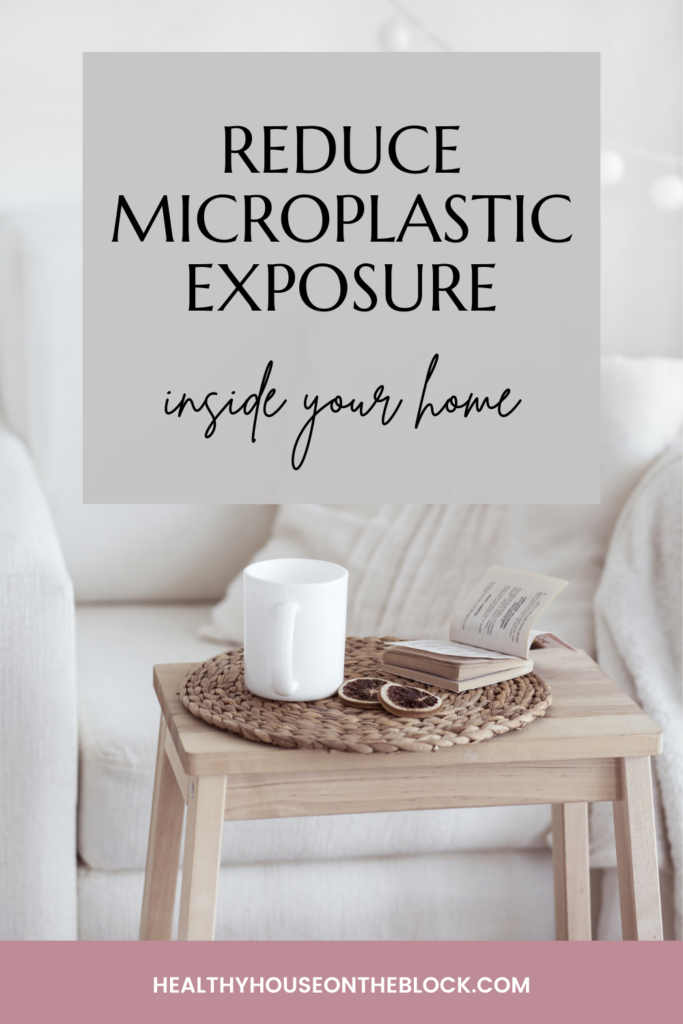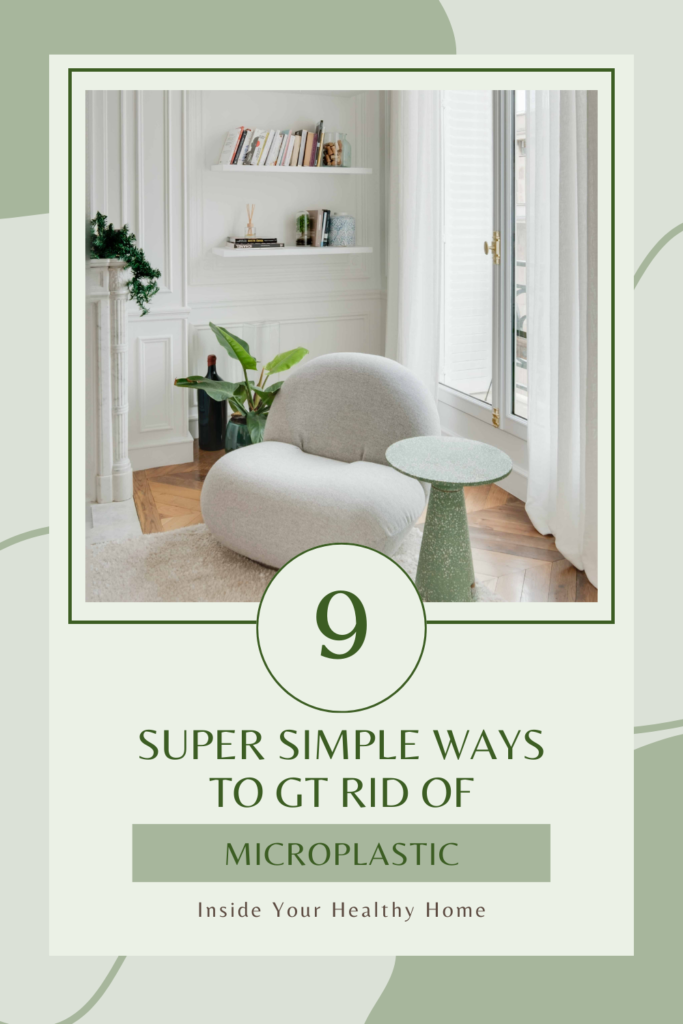
I’m well aware that there are toxins all around us, pretty much all of the time. And I don’t say this to invoke fear or trigger anxiety. It’s just a fact of the world we live in. But what do we do with this information? When toxins are everywhere, what’s the best course of action? For example, new studies have shown that microplastic in humans is becoming quite concerning.
My initial, split second reaction to a newly discovered toxin is to have a mini moment of anxiety filled with a flurry of thoughts: have I been working hard enough to prevent unnecessary exposure to this toxin? What if it’s too late and the exposure to this has caused irreversible damage? Is there something I can do? I need to research more about this. But what if I have to change my whole lifestyle or get rid of things I love to reduce toxin exposure?
Maybe you’ve been there too. It can be overwhelming to learn about new things that are making us unhealthy and impacting the health and wellness of ourselves, our family and our home.
After my thoughts calm down, sometimes I go into research mode to find out more. And sometimes, I’ll be honest, I choose to ignore what I just learned. It’s a way my brain works to protect myself from the worry and panic that tries to infiltrate my life.
But I always seem to come around with a more logical approach, which is the way I approach toxins and changes with not only my clients, but with you too, my community and readers.
While the facts of microplastics are disappointing, as a health conscious person, I know you’ll be able to take the information outlined here and reduce exposure in even just one small way in your own home.
WHAT ARE MICROPLASTICS
Microplastics are just what they sound like — tiny pieces of plastic that measure less than five millimeters across.
Due to our insane amount of plastic use in our country and world, these tiny plastic fragments have been found literally everywhere, from our water to the air we breathe and even in the human body.
A recent study actually detected microplastics in both adults and babies. According to the study, babies had over 10 times the amount of microplastic particles in their body compared to adults.
Another study indicated that microplastics are actually transported throughout the human body through our blood circulation. They’ve found microplastics throughout the body including places like the spleen, liver, colon, lung, placenta and breastmilk.
Microplastics come from synthetic textiles, personal care products, and even from opening plastic containers and bags and caps.

HEALTH IMPACTS OF MICROPLASTICS
While there is still so much to learn about microplastics in terms of how it impacts our health and wellness, there are a lot of conclusions we can make already.
A recent study suggests that the presence of microplastics may increase the risk of heart attack and other cardiovascular problems in those with heart disease. The same study also suggests that the tiny microplastic particles could double the risk of stroke or heart attack.
And as they learn more about the impact of microplastics, the studies they’ve performed on mice show that microplastics can disrupt the gut biome (STUDY) and impair learning and memory (STUDY).
Another published study shows that because several of the compounds in microplastic are regarded as endocrine disrupting chemicals, there is potential for the exposure to microplastics to alter natural hormone production and negatively impact the reproductive system (STUDY).
The same study also suggests that if the immune system cannot remove the particles right away, the exposure and accumulation of microplastics may induce chronic inflammation and increased risk of immune disorders, neurodegenerative diseases and even some cancers (STUDY).

MICROPLASTICS IN THE HOME
If microplastics are found everywhere, then you can bet they’re are plenty throughout our home too.
In fact, children’s bedrooms generally contain the highest amounts of microplastics due to their soft toys, non cotton bedding and rugs and carpets.
The second place we see a lot of microplastics: the kitchen. Plastic cutting boards release large amounts of microplastics into our food and are best avoided. Teflon coated pans also release microplastics into the food you cook in them.
Plastic food packaging is another source of microplastic in your home and releases the microplastic particles each time you open up a plastic container or heat your food in plastic containers.
The way you clean up in the kitchen matters too. Sponges, microfiber dishcloths and kitchen brushes are HUGE sources of microplastics that shed almost constantly in the kitchen.
And don’t forget about your drinking water! Our drinking water has been found to contain large amounts of microplastics. The good news is that most RO systems are excellent at reducing exposure to microplastics quite efficiently.
Our synthetic textiles are another large source of microplastics throughout the home. Anything made of polyester, nylon and acrylic will shed microplastics in the wash and around your home.

HOW TO AVOID MICROPLASTICS IN THE FUTURE
Avoid Plastic Packaged Products: Remember that anytime you open a plastic bag or plastic page with scissors or by tearing it apart, you’re creating microplastics (STUDY). Avoid products with plastic packaging if possible. And if you must open these products, do so over a garbage can to ensure no microplastic particles end up in your space.
Avoid Synthetic Textiles: If you can opt for a natural cotton or wool textile instead of a synthetic textile like microfiber, polyester, nylon or acrylic, you can avoid a huge source of microplastic exposure. This includes clothing, sheets, bedding and even toys.
Never Microwave Food in Plastic Containers: Microplastics are released every time you heat up food inside those plastic containers. Avoid using them at all if possible, but especially in the microwave.
Avoid Plastic Water Bottles: Whether it’s reusable water bottles or one time use plastic water bottles, avoid them if at all possible. Anytime you open the plastic water bottle, wash the plastic water bottle or get a tiny scratch in it, you’re exposing yourself to microplastics at home. Go for glass or stainless steel instead.

HOW TO REDUCE MICROPLASTICS IN YOUR HOME
Dust More & Dust Better: Microplastics have been found in dust in homes (along with all sorts of other toxins like pesticides, phthalates and more). By removing dust, you’re removing the microplastic particles from your home and reducing your exposure to this toxin. A few ways you can improve getting rid of dust at home are:
- Use a wet cloth to remove dust rather than pushing dust around your space with dry duster
- Change your HVAC filter frequently (use a MERV 10 or higher)
- Vacuum with a HEPA filter vacuum to reduce the most dust
Get a High Quality Air Purifier: An air purifier that uses a high quality filter or multiple filters with a fan will help reduce toxins from your air, including microplastic particles that end up in our dust and in our air. Medify Air is my purifier of choice after a lot of research — it’s an exceptional purifier with an excellent filter for an extremely reasonable price. (Be sure to use my code HHOTB for $15 off)
Ditch Plastic in the Kitchen: The sheer number of places that you can reduce exposure to microplastics in your kitchen is HUGE! Swap out your plastic cutting boards for a healthier material cutting board and then clean with natural sponges and all natural dishrags. And then check out my Kitchen Essentials Check List to help you reduce plastic all throughout your kitchen.
Filter Your Drinking Water: I personally use the Cloud Water Filter system for our drinking water to help remove almost all contaminants, including microplastics. I also love that they have an option for adding back in the minerals that are good for us that the RO system removes. Even if you just opt for a water filtering pitcher, it’s an important step to reducing toxins in your water.
Use Compostable One Time Use Silverware: I get it, sometimes one time use products are necessary. But instead of using plastic silverware and straws and cups, switch over to compostable products. Repurpose is an AWESOME choice for the convenience without the microplastics. (Be sure to use my coupon code HEALTHY15 for 15% off)

Even if you start reducing your plastic items and synthetic fabrics slowly, you’re still making headway and you’re still reducing your exposure to microplastics consistently. Pick an item to focus on changing and make a list of how you’re going to do it. Keep moving down the list and your home will be healthier in no time.



